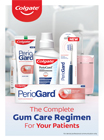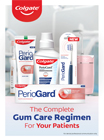Upcoming Events
1. Article Title.
2. Author Details.
3. Abstract.
4. Keywords.
5. Corresponding Author details.
March 2025
Volume : 41
No.: 1

Dr. Tapas Paul,Dr. Anuradha Mukherjee,Dr. Anamika Roy,Dr. Sk Mahboob Rahaman
Abstract: Local aneasthetic solution i.e; 2% lignocaine hydrochloride and 0.5% to 5% sodium hypochlorite solution is commonly used in root canal treatment in dentistry. Besides being a good antimicrobial agent, sodium hypochlorite is extremely tissue toxic. Hence, careful handling of the solution is highly recommended. This article discusses a case report involving an inadvertent injection of NaOCl instead of anesthetic solution before starting an endodontic procedure. Proper management following the event can reduce the complications. Preventive measures are to be taken to avoid such an unfortunate event.
Dr. Amit De,Dr. Shubhangi Gupta Law,Dr. Shahnaz .,Dr. Amrita Dutta,Dr. Aditya Banerjee,Dr. Rajashree Ganguly,Dr. Sanjukta Datta
Abstract: Introduction: Periodontal plastic surgery aims to restore the lost gingival tissue along with esthetics and function. Coronally displaced flap along with connective tissue graft has been a very promising technique for recession coverage. In this case because of the use of connective tissue, along with recession coverage there is also increase in the thickness of the keratinized gingiva. Case presentation: The patient complained of tooth hypersensitivity with respect to 43 tooth with 9mm class III gingival recession. The coronally repositioned flap with connective tissue graft was done and followed up for 3 months. After 3 months, fifty percent of gingival recession was covered and tooth hypersensitivity also reduced significantly. Conclusion: The use of this technique thus allows to successfully cover single and multiple recessions along with maintaining the thickness of keratinized gingiva.
Dr. Satarupa Debnath,Dr. Sayantani Maji
Abstract: Oral squamous cell carcinoma (OSCC) is one of the most prevalent forms of oral cancer, typically affecting individuals over 50 years old. It primarily arises from the squamous epithelial cells that line the oral cavity. Although less common in those under 40, OSCC can still occur in this age group. Known risk factors for developing OSCC include tobacco use (both smoking and chewing), excessive alcohol consumption, chronic irritation (such as from ill-fitting dentures), human papillomavirus (HPV) infection, and certain dietary habits. Early detection and intervention are critical to improving prognosis and reducing mortality associated with this cancer. This report presents a case of OSCC, involving the left lower alveolus of a 48-year-old male. The report highlights the early diagnosis and a brief review of the literature on squamous cell carcinoma.
Dr. Debajyoti Datta,Prof. (Dr.) Preeti Goel,Prof.(Dr.) Samiran Das,Prof. (Dr.) Sayan Majumdar,Prof. (Dr.) Soumitra Ghosh
Abstract: OBJECTIVE: The objective of this article is to analyze the literature on the topic, look into how users' quality of life is impacted by complete dentures, removable partial dentures and pinpoint the variables that affect patient satisfaction. METHOD: This article explores the impact of removable dentures on OHRQoL, focusing on parameters such as masticatory efficiency, speech, aesthetics, and psychosocial confidence. While well-fitting and properly designed dentures can enhance OHRQoL by improving chewing ability and restoring facial aesthetics, poorly constructed or ill-fitting dentures can lead to discomfort, reduced function, and social embarrassment, negatively impacting OHRQoL. CONCLUSION: In many prosthetic rehabilitation cases, patients' quality of life is improved by treatment with removable dentures. Clinicians should try their best to create dentures that are stable, pleasant, aesthetically pleasing, and allow for the best possible cleanliness.
Abstract: The integration of robotics into orthodontics represents a transformative shift in dental care, enhancing precision, efficiency, and patient outcomes. This literature review synthesizes current advancements, applications, and challenges of robotic systems in orthodontic practice. Key areas include robotic-assisted diagnostics, custom appliance fabrication, and automated tooth movement. While robotics offers significant advantages, such as reduced human error and personalized treatment, barriers like cost and technical complexity remain. Future directions emphasize artificial intelligence (AI) integration and collaborative robotics to further revolutionize orthodontic workflows.
Abstract: Verrucous carcinoma (VC) is an epithelial malignant tumour that can occur in skin and mucosa. The etiopathogenesis of this entity remains unclear although tobacco (smokable and chewed), alcohol, virus and oral sepsis have been mentioned as possible risk factors. It is considered to be a slow growing tumour with local aggressiveness, being exceptional reports of regional or distant metastasis. The most common morphological presentation is as an exophytic or verrucous lesion with a whitish coloration. Buccal mucosa, gingiva and tongue are the most frequently affected oral sites.
Abstract: Reactive gingival lesions like pyogenic granuloma, peripheral giant cell granuloma, and fibroma are commonly seen in oral cavity. These lesions are sessile or pedunculated, inflammatory, highly vascular with fragility of tissues and have tendency to bleed moderate or profusely. The treatment is complete surgical excision with proper curettage of the base of the lesion to avoid recurrence. Treatment with sclero therapy prior to surgery reduces vascularity of the lesion making it more fibrotic and aids in proper tissue management. There are different types of agents that can be used in sclerotherapy. Some of these agents can be toxic to the tissues; while boiling water for injection (WFI) is highly pathogen free, non-toxic, easily available, and economic. WFI can be usedas sclerosant in such circumstances, prior to surgical excision. This paper illustrates the remarkable outcome when WFI is used as an agent in sclerotherapy in gingival growth with significant reduction of the fragility of the tissues making it more fibrotic, reduction of the vascularity and size of the growth and helping in proper surgical excision in a case series of four different cases.
Dr. Palak Gupta,Dr. Kallol Kumar Saha,Dr. Lugu Buru Murmu
Abstract: Aim : The study aimed to evaluate the regenerative capability of advanced platelet-rich fibrin (A-PRF) in the maxillary incisor region for the regenerative treatment of necrotic immature permanent teeth (NIPT). Study design : In this case report, three individuals with NIPT in the maxillary incisor region, age 14 to 18 years, were treated with A-PRF. Prior to beginning treatment, baseline vitality, radiographic evaluation with IOPAR, Cone beam computed tomographyand clinical tests were recorded. Following treatment, patients were monitored for three, six, and twelve months. Results : After 3, 6, and 12 months of follow-up, all patients (100%) showed complete resolution of clinical signs and symptoms. All patients showed periradicular healing, and all patients showed a clear hard tissue bridge formation at various levels in the root canal on postoperative CBCT and radiographs. Conclusion : Biomaterial like A-PRF has proven itself very promising in regenerative endodontic treatment. To prove its superiority over other material further studies may be planned in future.
Dr. Tanvi Islam,Dr. Sayani Adhikari ,Dr. Soumen Pal
Abstract: This care report describes the treatment of a 10-year-old boy who had two extra teeth that caused his maxillary central incisors to become impacted. Correct incisor relocation was achieved using a sequential procedure that included surgical removal of the supernumerary teeth, and surgical exposure followed by orthodontic traction of the impacted teeth. Throughout treatment, close observation and interdisciplinary collaboration produced a successful aesthetic result, with ideal periodontal health and functional occlusion
Prof. (Dr.) Debabrata Biswas,Dr. Rima Biswas
Abstract: The success of dental implants is often evaluated based on peri-implant bone levels, as maintaining these levels is crucial for preserving the gingival margins and interdental papillae. In recent years, the concept of platform switching has gained traction among implant manufacturers as a method for preserving peri-implant bone levels. Crestal bone levels are typically located 1.5 to 2 mm below the implant-abutment junction (IAJ), a phenomenon influenced by various factors and supported by several theoretical explanations. Platform switching involves using smaller diameter abutments to restore implants, leading to a horizontal repositioning of the IAJ inward and away from the edge of the implant platform. This approach aims to reduce crestal bone loss surrounding the implants. The purpose of this review is to highlight the importance of platform switching in maintaining peri-implant bone levels.
Dr. Soumen Pal,Dr. Monideepa Mitra,Dr. Archana Venugopal,Dr. Ankit Bapat,Dr. Mehendi Tirkey
Abstract: Missing anterior teeth could be cause of emotional and social anxiety in paediatric patients. It may cause self-esteem issue due to unesthetic appearance apart from difficulty in phonation, chewing etc. This case report describes the surgical and orthodontic management of a missing maxillary central incisor in an 8 years old boy.
Dr. Indranil Ghosh,Dr. Pushan Maity,Dr. Mayukh Misra,Dr. Sudipta Sahu
Abstract: Parotid duct strictures are an uncommon cause of obstructive sialadenitis, leading to recurrent parotid gland swelling, pain, and reduced quality of life. While sialendoscopy offers a minimally invasive option, refractory cases may require surgical intervention. Sialodochoplasty, involving enlargement of the ductal orifice, serves as an effective treatment for severe or recurrent ductal strictures. We report the case of an old-aged patient with a chronic Right parotid duct stricture successfully treated with Sialodochoplasty, leading to symptom resolution and restoration of normal salivary function.












